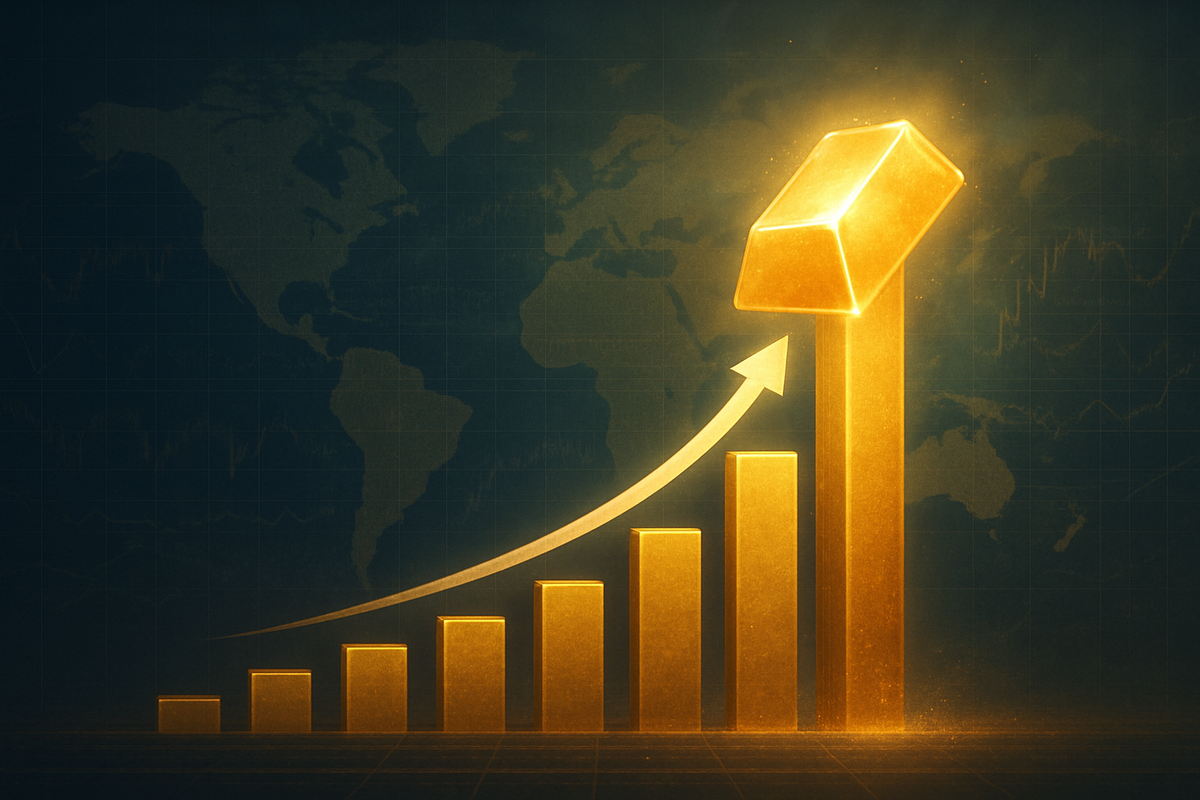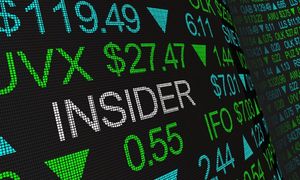
October 21, 2025 – Contrary to some market anxieties, the gold market has not experienced a significant slump in recent days; instead, it has been on an extraordinary ascent, shattering previous records and reaching unprecedented highs around October 17-18, 2025. This remarkable rally has seen spot gold prices surge past the US$4,300 per ounce mark, culminating in a new all-time high of approximately US$4,381.58 per troy ounce. This powerful performance, marking gold's strongest year since 1979, signifies a robust and sustained bullish trend, driven by a complex interplay of geopolitical tensions, persistent inflation concerns, and a global shift in central bank strategies.
The immediate implications are profound: gold is firmly established as a premier safe-haven asset and a potent hedge against economic uncertainty. While minor technical corrections and profit-taking have been observed after such rapid gains, these are largely viewed as healthy consolidations within an overarching bull market, offering strategic entry points for long-term investors. The market is now grappling with the implications of sustained high gold prices, influencing investment strategies, corporate decisions in the mining sector, and broader macroeconomic trends.
The Unprecedented Surge: A Detailed Look at Gold's Record Run
Gold's journey to its October 2025 record highs has been nothing short of spectacular. After breaking the psychologically significant US$4,000 per ounce barrier on October 8, 2025, the precious metal continued its parabolic rise, frequently topping US$4,300 per ounce before reaching its all-time high of US$4,381.58. This represents an astonishing year-to-date gain of over 40% from January levels, with some analyses even pointing to a 47% return through September 2025. While there were minor instances of intraday profit-taking, with gold briefly dipping around October 21, 2025, to approximately US$4,267.31, these were negligible compared to the magnitude of the preceding rally. Other precious metals, including silver, platinum, and palladium, also mirrored this strong performance, albeit with some subsequent corrections.
The timeline leading up to this moment has been characterized by a confluence of powerful drivers. Throughout 2025, escalating geopolitical tensions, including ongoing conflicts in the Middle East and Europe, alongside renewed US-China trade disputes, have consistently fueled safe-haven demand. Fears of a potential US government shutdown further added to market instability, pushing investors towards gold. Simultaneously, global central banks, particularly those in emerging markets like China, India, Turkey, and Poland, have been aggressively accumulating gold, driven by a strategic imperative to diversify reserves away from the US dollar and hedge against currency devaluation. The US dollar's share of global foreign exchange reserves has notably declined, reinforcing the de-dollarization narrative.
Adding to this bullish cocktail, expectations of further interest rate cuts by the US Federal Reserve have made non-yielding assets like gold more attractive compared to interest-bearing alternatives. The Fed had already lowered rates earlier in the year, with market participants anticipating additional cuts before the end of 2025. This dovish stance, coupled with a weakening US dollar, made gold more affordable for international buyers, further stimulating demand. Key market players, including major banks and institutional investors, have largely embraced this bullish outlook, with institutions like HSBC, Goldman Sachs, and UBS significantly raising their gold price forecasts for 2025 and 2026, often citing targets well above US$4,500 per ounce. Strong inflows into gold-backed Exchange Traded Funds (ETFs) and a consistent buying pattern from central banks underscore the broad-based institutional confidence in gold's upward trajectory.
Corporate Fortunes: Winners and Losers in a Golden Era
The sustained high price of gold has created a clear distinction between winners and those facing strategic challenges within the financial markets. Public companies with direct exposure to gold, particularly mining operations, precious metals dealers, and investment firms, are experiencing significant impacts.
Gold Mining Companies are unequivocally among the primary beneficiaries of this rally. Their revenues are directly tied to the price of gold, meaning higher prices translate into significantly enhanced profitability. This has led to substantial gains in their stock prices, with major gold producers often seeing their equities outperform the metal itself. For instance, Barrick Gold Corp (NYSE: GOLD) and Newmont Corporation (NYSE: NEM), two of the world's largest gold miners, have seen their stock valuations climb, driven by increased earnings potential. This environment allows miners to expand profit margins, increase exploration budgets, and potentially boost shareholder returns. Companies like Agnico Eagle Mines Ltd. (NYSE, TSX: AEM) and Kinross Gold Corp (NYSE, TSX: KGC) are leveraging these high prices to optimize production and strengthen their balance sheets. While the minor profit-taking observed around October 21, 2025, did lead to some temporary selling pressure on gold mining stocks, such as Newmont declining 7.6% and Barrick Gold Corporation retreating around 6%, these corrections are generally seen as short-term adjustments within a larger growth story. Financially robust miners with low All-in Sustaining Costs (AISC) are particularly well-positioned to capitalize, potentially engaging in strategic mergers and acquisitions to expand their reserves from smaller, less capitalized competitors.
Precious Metals Dealers, such as A-Mark Precious Metals, Inc. (NASDAQ: AMRK), are experiencing increased demand for physical gold products from both retail and institutional investors. Higher gold prices, while potentially deterring some new buyers, often stimulate greater transaction volumes as existing holders look to realize profits or new investors seek to enter the market. Dealers benefit from wider bid-ask spreads and increased demand for related services like storage and vaulting.
Investment Firms with significant allocations to gold bullion, gold-backed ETFs, or gold mining stocks have seen their Assets Under Management (AUM) swell. Firms managing large gold ETFs like BlackRock, Inc. (NYSE: BLK) with its iShares Gold Trust (IAU), and State Street Corp (NYSE: STT) with its SPDR Gold Shares (GLD), are benefiting from increased management fees as the value of these funds rises. While a minor correction might lead to temporary outflows, the overall trend of strong inflows into gold-backed products indicates sustained investor interest. These firms are likely to continue promoting gold as a crucial component of diversified portfolios, particularly given its role as a hedge against inflation and market volatility.
Broader Implications: Gold's Role in a Shifting Global Order
Gold's spectacular rally is not an isolated event but a powerful reflection of profound shifts in the global economic and geopolitical landscape. It intertwines deeply with several broader industry trends, underscoring the metal's enduring significance.
The de-dollarization movement is perhaps the most prominent underlying driver. Central banks' aggressive gold accumulation, with gold's share in global foreign exchange reserves steadily increasing while the US dollar's share declines, signals a deliberate strategy to reduce reliance on the greenback. Gold's rally, even with minor corrections, reinforces its role as a preferred alternative reserve asset, offering diversification and hedging against currency fluctuations. This trend is expected to continue, providing a structural floor for gold prices, as nations seek greater financial sovereignty and stability in an increasingly fragmented monetary order.
Persistent inflation concerns also play a crucial role. Gold is historically a robust hedge against inflation, and its performance in 2025, significantly outpacing the US Consumer Price Index, confirms this. While the minor pullback around October 21 could be interpreted as a temporary moderation of inflation expectations, the overall sentiment suggests that inflationary pressures remain a concern for investors. The expectation of further interest rate cuts by the Federal Reserve, which typically supports gold by reducing the opportunity cost of holding a non-yielding asset, further bolsters its appeal in an environment where real interest rates may remain low. Gold also performs exceptionally well in stagflationary environments, making it an attractive asset in the current uncertain economic climate.
Geopolitical instability remains a paramount factor. Ongoing conflicts, trade tensions, and global uncertainties have consistently driven safe-haven demand for gold. The temporary easing of US-China trade tensions, which might have contributed to the brief profit-taking after the record highs, highlights gold's sensitivity to geopolitical news flow. However, the underlying drivers of global instability are deep-seated, ensuring that gold will continue to be a go-to asset during times of heightened risk.
Ripple effects are evident across the market. The gold rally has boosted the entire precious metals complex, with silver and platinum also seeing significant gains. Gold mining stocks have demonstrated an amplified response, enjoying substantial appreciation. Conversely, a stronger US dollar, which often coincides with gold pullbacks, can temporarily draw capital away from gold. Historically, gold has seen similar surges during periods of high inflation and geopolitical turmoil, such as the 1970s stagflation. While the current environment is unique, the parallels reinforce gold's traditional role. Regulatory or policy implications largely revolve around central bank actions, with continued gold purchases by central banks providing crucial support and signaling a long-term strategic shift towards gold as a cornerstone of national reserves.
What Comes Next: Navigating the Golden Era Ahead
Following its record-breaking surge, the gold market is poised for an intriguing period, characterized by sustained bullish momentum tempered by the potential for healthy, albeit temporary, corrections.
In the short-term (late 2025), the market anticipates continued strength. While some technical indicators suggest gold is overbought, leading to potential intraday profit-taking, these dips are widely viewed as buying opportunities rather than signals of a sustained downturn. Key drivers will include upcoming US monetary policy announcements, particularly regarding interest rates, and any shifts in global geopolitical tensions. Analysts from institutions like ANZ Bank project gold could exceed US$4,400 per ounce by year-end, with others forecasting a strong close around US$4,240.65.
The long-term outlook (2026 and beyond) remains overwhelmingly bullish. Major financial institutions are aggressively revising their price targets upwards, with J.P. Morgan Research expecting gold to approach US$4,000 by mid-2026, and UBS, Goldman Sachs, and Bank of America projecting targets ranging from US$4,700 to US$5,000 per ounce by 2026. This structural bull market is underpinned by persistent drivers: ongoing geopolitical risks, lingering inflation concerns, and robust central bank demand for diversification.
Strategic pivots and adaptations are critical for market participants. Investors are advised to leverage any price dips as buying opportunities, maintain strategic allocations to gold for portfolio diversification (typically 2-4%), and focus on risk management due to potential short-term volatility. Gold miners will likely capitalize on high prices by optimizing production, increasing exploration efforts, and potentially engaging in M&A to expand reserves. Efficient cost management will remain paramount. Central banks are expected to continue their aggressive gold accumulation, viewing gold as a strategic asset for monetary system stability, geopolitical hedging, and financial sovereignty, potentially even modernizing their gold management through derivatives and ETFs.
Market opportunities abound, including continued safe-haven demand, gold's proven efficacy as an inflation hedge, and its low correlation with other asset classes, making it an ideal portfolio diversifier. The consistent support from central bank buying provides a strong floor. However, challenges include potential short-term volatility and corrections, the risk of a stronger US dollar, and any significant easing of geopolitical tensions or a faster-than-expected monetary policy normalization that could dampen gold's appeal.
Potential scenarios and outcomes include a high probability of a continued bull market, driven by existing structural factors, with gold consistently trading above current record levels and potentially exceeding US$5,000 per ounce by 2026. A more likely scenario involves moderate corrections followed by a quick resumption of the rally, as underlying demand quickly absorbs any profit-taking. A bearish scenario, involving a significant downturn, is considered low probability, requiring a fundamental shift in global economic and geopolitical conditions, which currently appears unlikely given the sustained central bank buying.
Wrapping Up: Gold's Enduring Luster in an Uncertain World
Gold's record-breaking rally in October 2025 emphatically demonstrates its enduring luster and critical role in the global financial system. Far from experiencing a slump, the precious metal has defied expectations, solidifying its position as a premier safe-haven asset, an effective hedge against inflation, and a vital tool for portfolio diversification.
The key takeaways from this period are clear: the de-dollarization trend is accelerating, central banks are strategically fortifying their reserves with gold, and geopolitical uncertainties continue to drive investor demand for tangible assets. While short-term volatility and minor corrections are a natural part of any bull market, these are largely seen as opportunities for astute investors to increase their exposure. The market is moving forward with a strong conviction in gold's long-term potential, with numerous institutional forecasts pointing towards even higher price targets in the coming years.
Investors should closely watch central bank policies, particularly the Federal Reserve's stance on interest rates, as well as global geopolitical developments. Any significant shifts in these areas could influence short-term price movements. However, the overarching message is that gold's structural tailwinds are robust, suggesting that its role as a store of value and a hedge against global instability will only grow in significance in the months and years ahead. The golden era for the precious metal appears to be just beginning.
This content is intended for informational purposes only and is not financial advice





